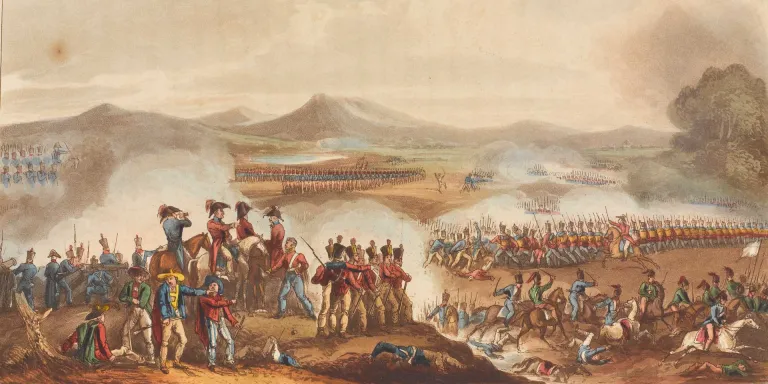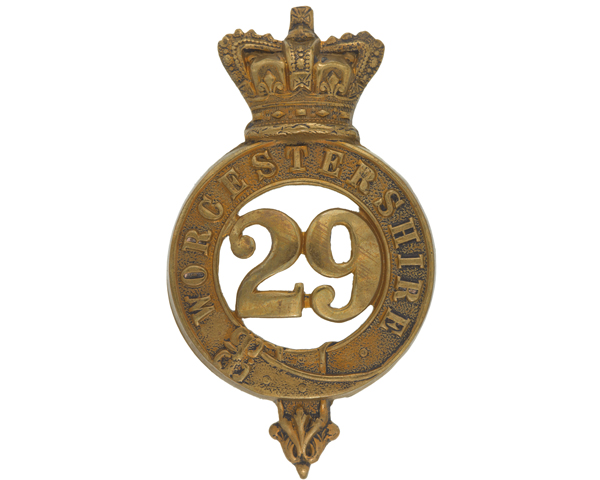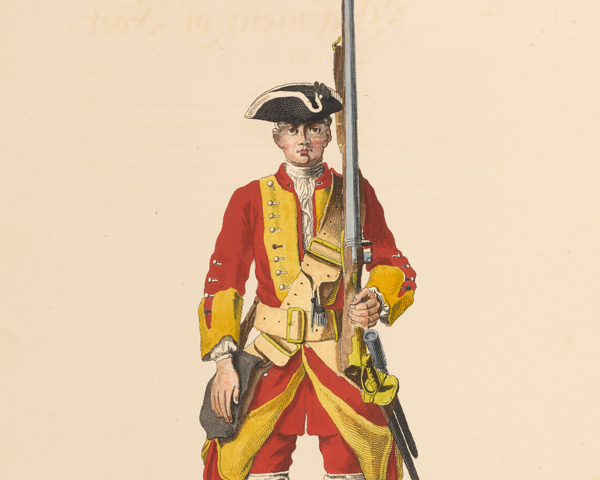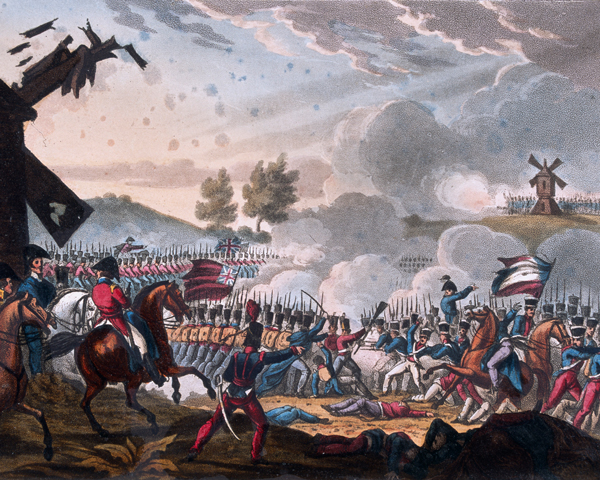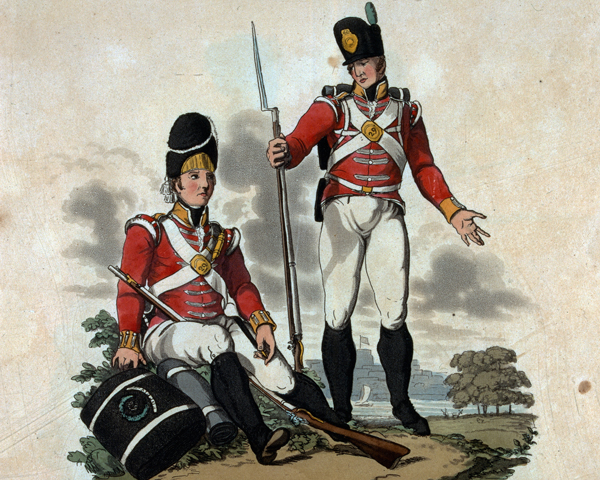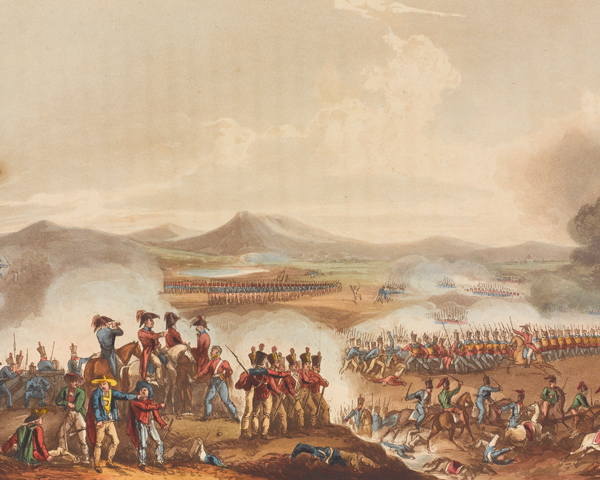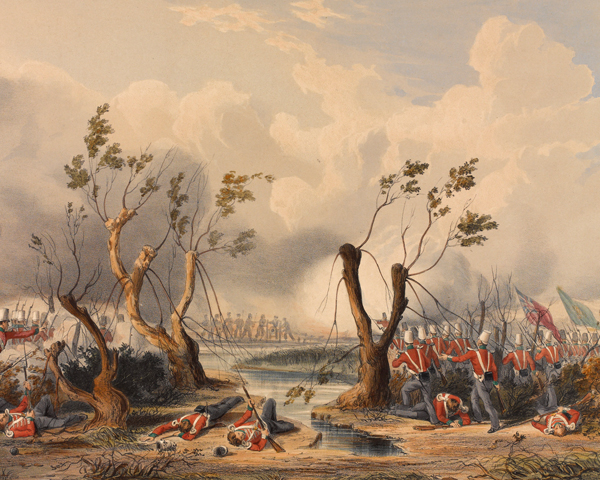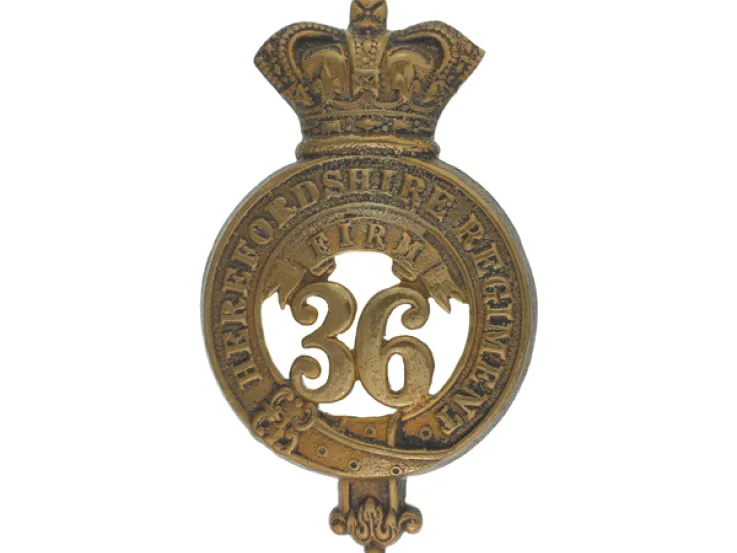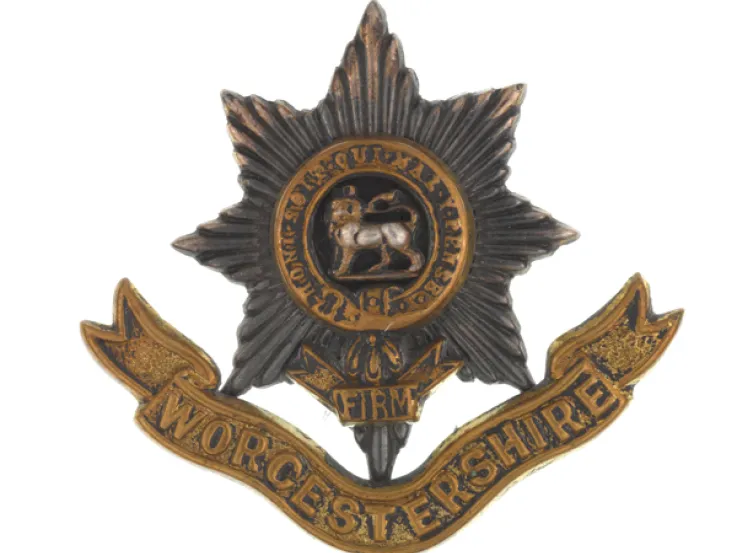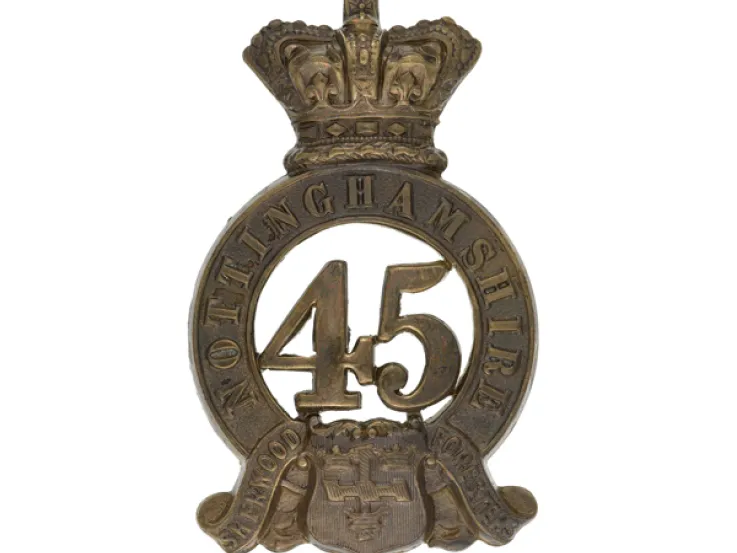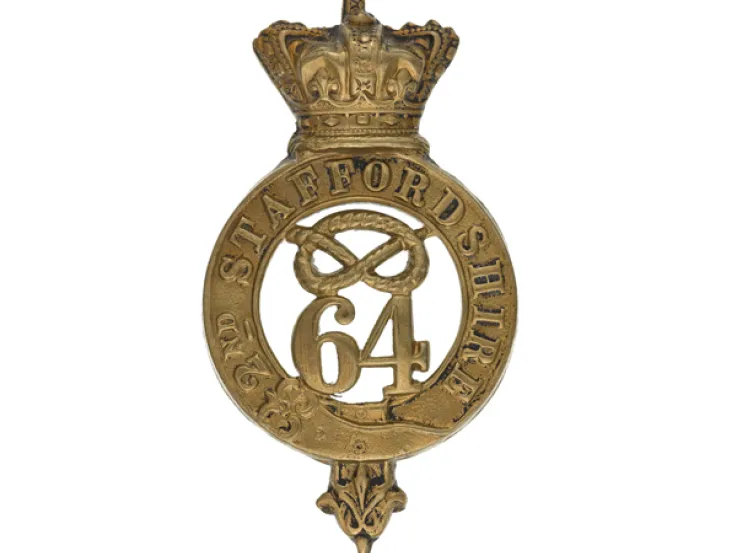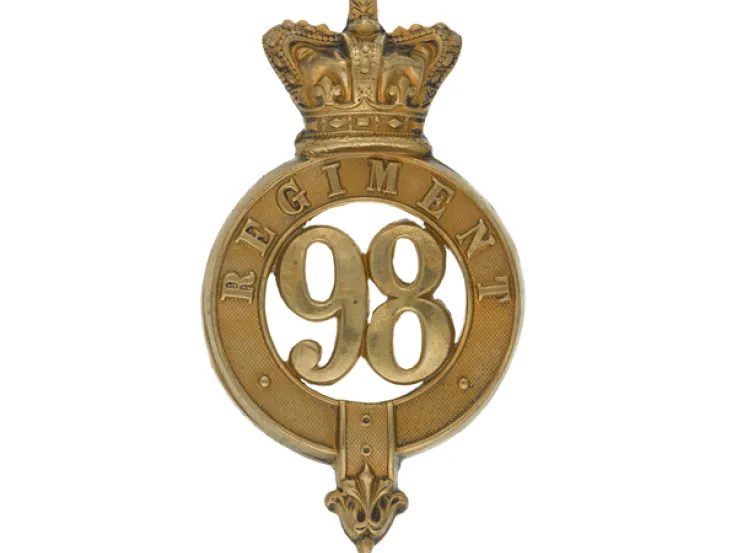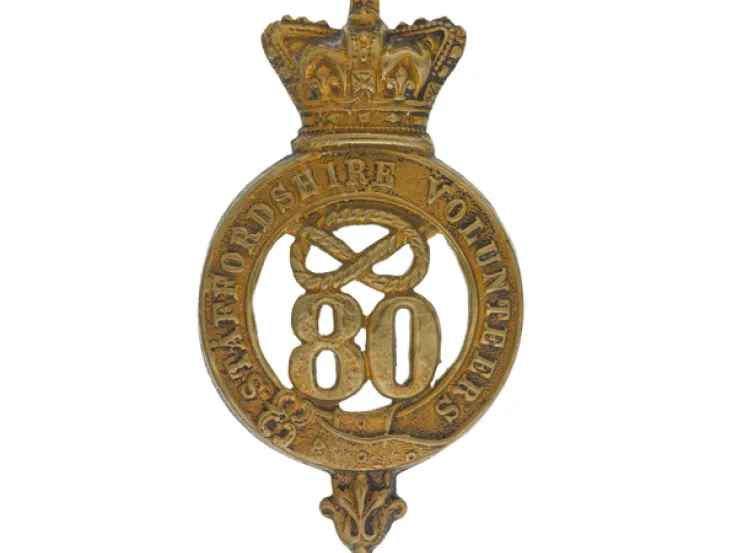Explore more from Regiments and Corps
29th (Worcestershire) Regiment of Foot
Related topics
The Battle of Talavera, where the 29th Regiment captured two French colours in 1809
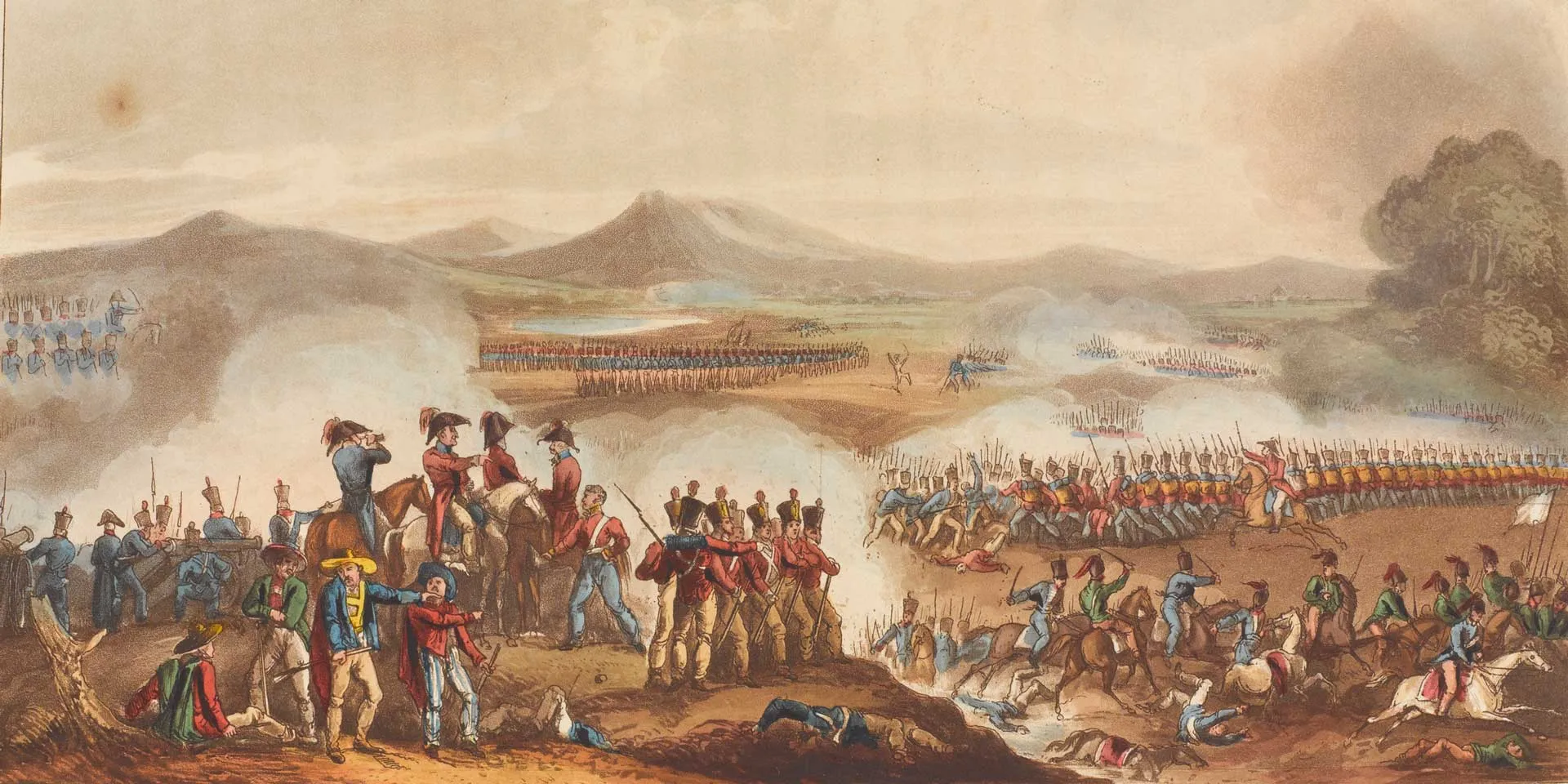
Origins
In 1694, Colonel Thomas Farrington, a Coldstream Guards officer, was commissioned to raise a regiment of foot to serve in the Nine Years War (1689-97). This regiment was disbanded in 1698, but Farrington raised it again in 1702 during the War of the Spanish Succession (1702-13).
The re-formed unit fought at the Passage of the Lines of Brabant (1705) and at Ramillies (1706), before assisting in the Siege of Ostend (1706). It then fought at Gibraltar, remaining there for the next three decades.
During the War of the Austrian Succession (1740-48), it served in North America, helping to capture Louisbourg in 1745. When the British Army was reorganised in 1751, the unit was given the number 29 in the infantry order of precedence.
Glengarry badge, 29th (Worcestershire) Regiment of Foot, c1874
A soldier of the 29th Regiment, c1745
Which of the following was a nickname of the 29th Regiment?
The regiment's officers all wore swords even when off-duty in the mess right up until the 1850s. This was in obedience to an order issued after officers and men were surprised by native Americans while unarmed at night at Port-la-Joye in 1746.
Drummers
Between 1752 and 1761, the unit's colonel was George Boscawen. During this period, he freed ten black slaves given to him by his brother Admiral Edward Boscawen and enlisted them as drummers. This regimental tradition of having black drummers continued until 1843.
America
In 1770, eight men from the unit's grenadier company were tried for murder after accidentally opening fire on rioters in Boston. Two of them were convicted of manslaughter; the rest were exonerated thanks to their defence counsel John Adams, a future president of the United States.
After a brief spell in England, the regiment returned to Canada in 1776 during the American War of Independence (1775-83) to repulse American attempts to capture Quebec. It then fought on board ship in the Battle of Valcour Island (1776), and on land in the Saratoga campaign (1777), during which its flank companies were captured.
After the British defeat in America, the regiment withdrew first to Canada and then England in 1787. Five years earlier, it had been given a county affiliation with Worcestershire, so it was here that it re-recruited.
The Battle of Rolica, 1808
Soldiers of the 29th Regiment, 1812
War with France
The regiment's opening engagement of the French Revolutionary Wars (1793-1802) came at Alkmaar in Holland in 1799. However, detachments had already served as marines on board two British ships at the Glorious First of June in 1794, gaining the regiment a naval crown.
It was one of the first British units to deploy during the Peninsular War (1808-14) in July 1808. It fought at Rolica (1808), Vimeiro (1808), Talavera (1809) and Albuera (1811), capturing two French Colours. These achievements earned it the accolade 'the best Regiment in this Army' from Sir Arthur Wellesley, the commander-in-chief and future Duke of Wellington.
However, it suffered such losses in the Peninsula that it had to return to England in 1811 to recruit back up to full strength. It was then quickly redeployed to Canada in 1814 for the War of 1812 (1812-15) and to Belgium for the Waterloo campaign in 1815. In both cases, it arrived too late to see any major action.
The Battle of Talavera, 1809
The Battle of Chillianwala, 1849
India
It spent the next four decades on garrison duty in England, Ireland, Mauritius and India. The latter service included fighting at Ferozeshah (1845) and Sobraon (1846) in the First Sikh War (1845-46), and at Chillianwala (1849) and Gujerat (1849) in the Second Sikh War (1848-49).
The regiment also sent a detachment to defend parts of the Grand Trunk Road, which ran between Kabul and Bengal, during the Indian Mutiny (1857-59). It then returned to garrison duties in the British Isles, Malta, Canada and the West Indies in the 1860s and 1870s.
Legacy
The 29th had served alongside the 36th (Herefordshire) Regiment of Foot during the Peninsular War and the two units began recruiting from the same Worcester depot in 1873. Eight years later, in 1881, they were amalgamated to form The Worcestershire Regiment.
Regimental museums
The National Army Museum works with a network of Regimental and Corps Museums across the UK to help preserve and share the history and traditions of the Army and its soldiers.
Discover more about the 29th (Worcestershire) Regiment of Foot by visiting The Worcestershire Soldier displays at Worcester City Art Gallery and Museum.

